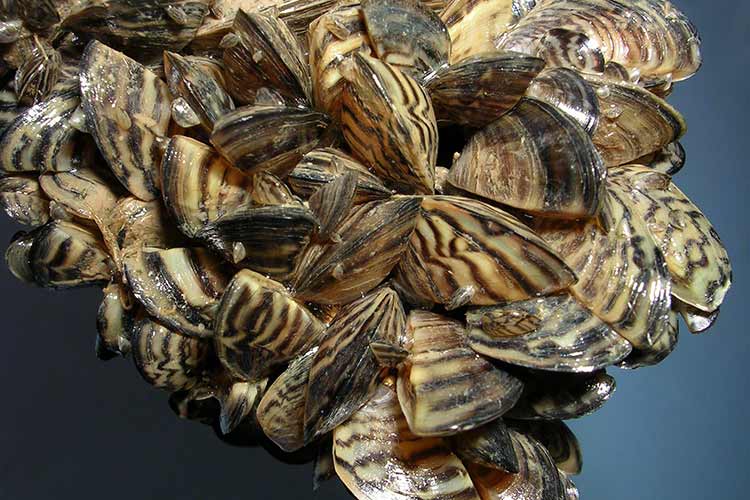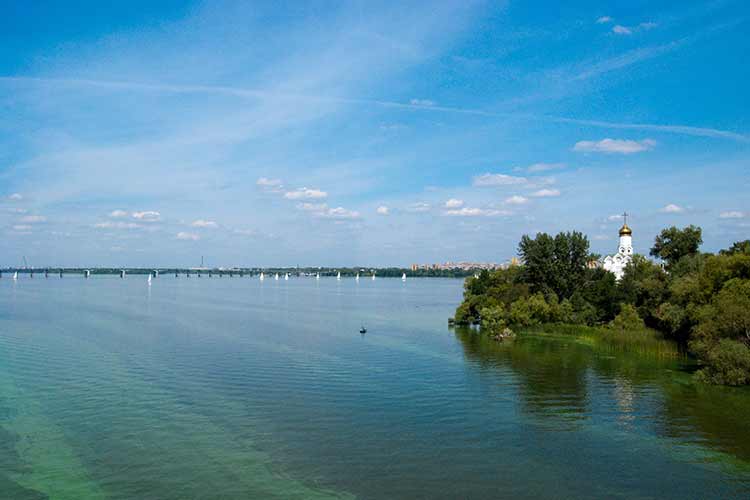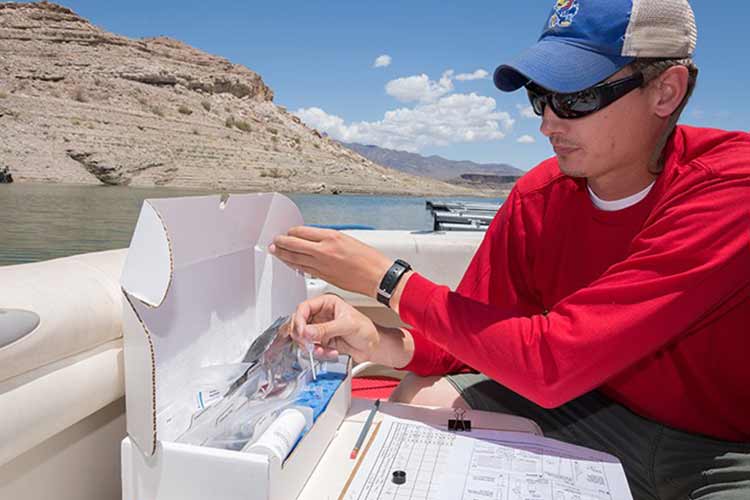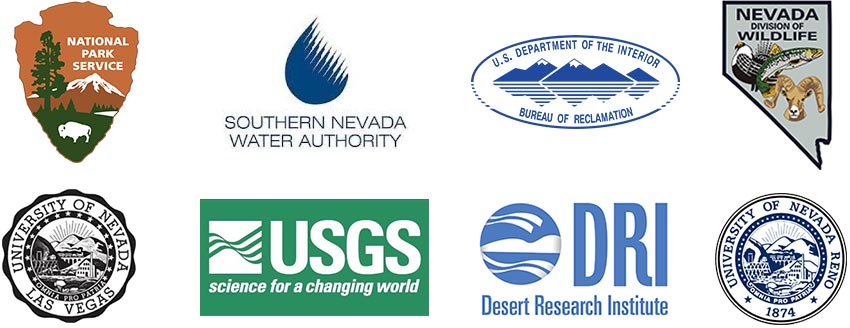
The invasion of quagga mussels and the lengthy drought has been plaguing the Southwest. Ecosystems are naturally resilient and can usually bounce back in response to changing conditions, but lakes Mead and Mohave have recently been hit hard with two big changes: the invasion of quagga mussels and the lengthy drought that has been plaguing the Southwest. Scientists are working hard to determine whether the lakes’ food webs can cope with the new conditions or if these upheavals have unsettled the basic biological relationships that keep the lakes healthy. Since quagga mussels hitched a ride to lakes Mead and Mohave in the mid-2000’s, scientists have wondered if these invaders were wreaking havoc on the natural systems in which they reside and upsetting the delicate workings of the reservoirs’ food webs. In their native habitat, Europe’s Dnieper River, quagga mussels play an important role in the ecosystem: they feed on tiny organisms suspended in the water maintaining the waterway’s clarity. Each tiny mussel can filter as much as a liter of water per day. But in their new habitat, lakes Mead and Mohave, where more than a trillion mussels thrive, all this filtering this isn’t necessarily a good thing. 
Quagga mussels are an invasive species that came to the U.S. from the Dnieper River, one of Europe's largest rivers. For instance, it’s possible that the super-efficient quagga mussels are taking a toll on plankton populations. Some studies conducted at other lakes with quagga mussels have found that phytoplankton and zooplankton populations have dropped by 75% or more in waterways where quaggas are present – that means a lot less food for other organisms. Thankfully, recent research1 suggests that quagga mussels in Lake Mead have not significantly changed either the amount of plankton available or the number of species present for other creatures to eat. There have been slight increases in the numbers of the cyanobacteria2 microcystis, which requires monitoring since microcystis blooms have the potential to create algal toxins. Overall the research indicates that the mussels might not be as problematic for the food web in lakes Mead and Mohave as they have been elsewhere, such as Lake Erie - at least not yet. Drought, too, might be expected to seriously change the lakes’ ecosystem and its biological relationships by changing basic characteristics like water levels and temperature. Lowered water levels, for instance, might make survival for razorback suckers even tougher since their shallow shoreline habitat could shrink. Also, increased temperatures could lead to more frequent and larger algae blooms which could upset food web dynamics. 
A researcher collecting data used to help answer critical questions about lake health. With two big changes – the quagga invasion and the drought – happening simultaneously, it’s been difficult for researchers to untangle the consequences of each of these events on the lakes’ health. Plus, the lakes have been changing in other ways at the same time; for instance, since the early 2000’s, water treatment plants have been removing more and more phosphorus from the wastewater coming into Lake Mead so the lake’s nutrient composition is changing. Figuring out which effects, if any, are due to each change has been complicated – but researchers from various institutions including the National Park Service, Southern Nevada Water Authority, US Geological Survey, Bureau of Reclamation, Nevada Department of Wildlife, Desert Research Institute, University of Nevada, Las Vegas and the University of Nevada, Reno are continuing to observe the lakes, compiling data that will eventually help answer these questions. Experiments in laboratories can also help determine the effects of these changes on water quality and food web dynamics because there, researchers have more control over scientific variables and can study the changes one by one. 
Researchers from various institutions continue to observe the lakes, compiling data that will help reveal the effects of change. The scientific process isn’t fast, but piece-by-piece scientists are on track to uncover the truth about how large-scale changes are affecting the lakes’ food webs. |
Last updated: April 5, 2017
